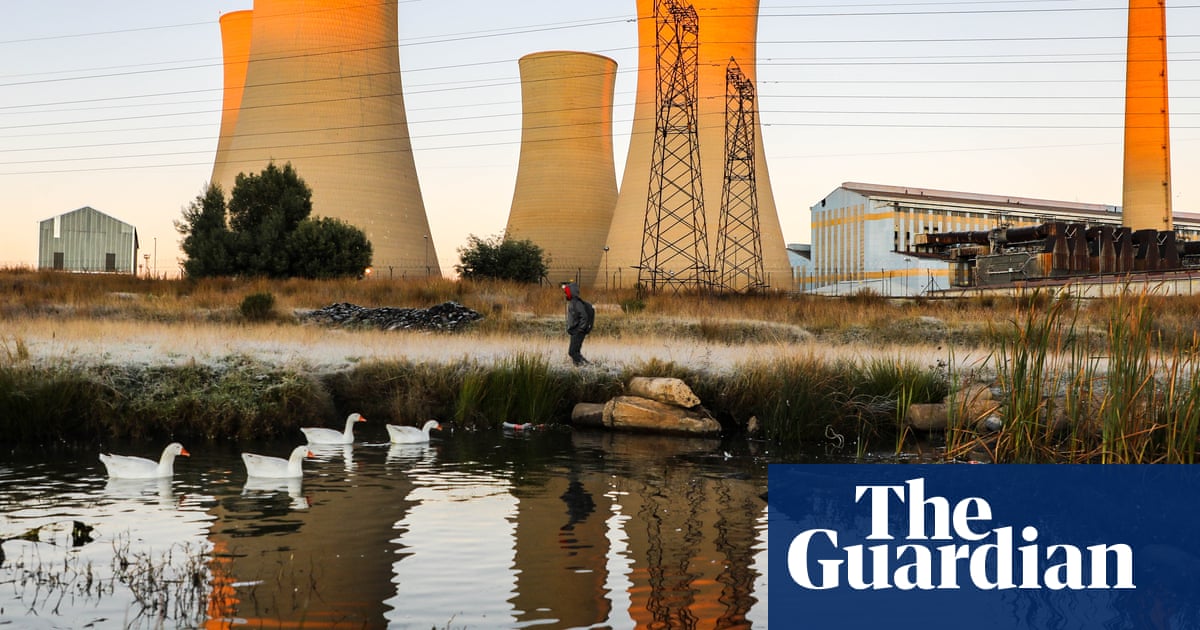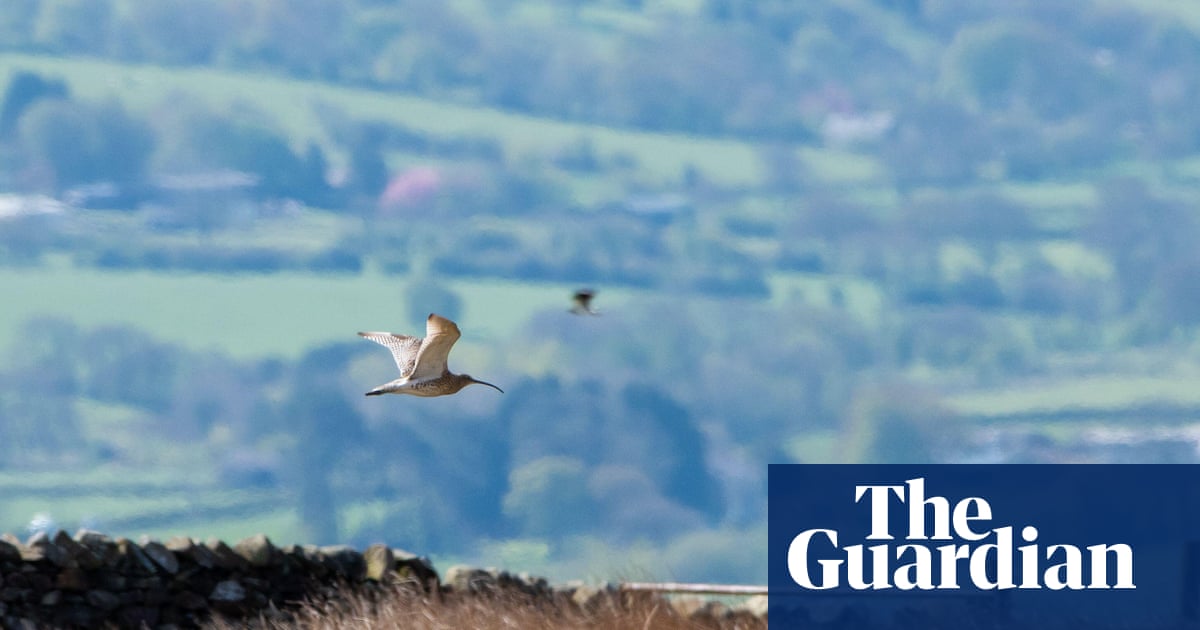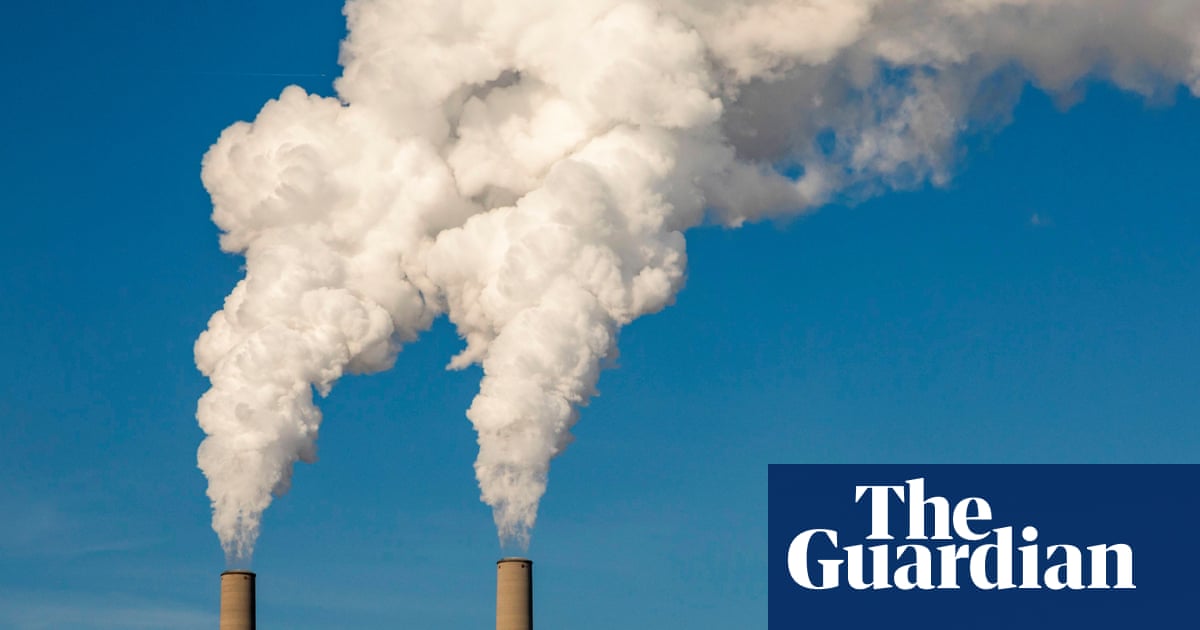Dramatic rainstorms earlier this month brought more than 6in of rain to the California mountains – a full month’s worth of rain in little more than a day – but the deluge wasn’t enough to reverse a worsening drought trend that is set to intensify further in the coming weeks and months.
Along the iconic Pacific Coast highway in Malibu, where just weeks earlier flames leveled hundreds of oceanside homes, a Los Angeles firefighter was washed out to sea, and later rescued.
Massive debris flows transported a thick layer of mud into neighborhoods near Altadena, the same place where search and rescue crews had gone house to house searching for survivors among the wreckage of the worst wildfire disaster in the history of southern California. The hardest hit from the mudslides was the foothills town of Sierra Madre, which was under evacuation orders last month from the Eaton fire – and now must dig out from a newly deposited feet-thick layer of muck.
Such “weather whiplash” – a telltale sign of the climate crisis – looks to shift the semi-arid south-western corner of the US back toward drought as the month of March approaches.
This year’s rainy season is looking more and more like just a rainy week for southern California and other parts of the western US dependent on the Colorado River. Looming just beneath the veneer of muddy roads and fresh mountain snow is the reality of worsening drought.
What had been the driest start to a rainy season in history for most of southern California – with just a fraction of an inch of rain falling from early October through late January – is now looking to return to a weeks-long dry pattern, according to current projections from the National Weather Service. No additional significant rains or snows are in the forecast for at least the next two weeks, and possibly longer.
Current snowpack in the southern Sierra mountain range in California is well below average for the beginning of March, echoing a pattern among the entire “lower basin” of the Colorado River catchment, including most of the state of Arizona – plus the desert cities of Las Vegas and southern California, which pipe in water from the river over a complex system of aqueducts and canals. Mountain snows during the winter months are crucially important to the healthy flow of the Colorado during the spring and summer months, and this year, they haven’t come. The snowpack across the multi-state region currently sits at just 25% of normal. Annual snowpack in the region typically peaks around 1 March before the spring melt season begins.
With the south-west under the influence of a La Niña weather pattern, which typically results in drier winters across the southern United States, that means time is running out for the approximately 40 million people who depend on water from the Colorado River.
“We are near a tipping point on the Colorado,” said Greg Pierce, an urban planner who directs the UCLA Water Resources Group.
This year’s drought on the Colorado River isn’t new: the current episode of unusual dryness began in 2000, according to data from the US Geological Survey, and has been worsened by the rising temperatures associated with increasing global greenhouse gas emissions. The drought has kicked off a tense period of renegotiating decades-old agreements that govern the river’s usage between states, tribes, cities and landowners that reached a head last fall during the final days of the Biden administration.
Pierce said it seemed the difficult lessons that “rivers have hard limits” and climate change is going to reduce the river’s predictable flow – combined with historic low water levels – had finally gotten through to key stakeholders.
Initial compromises have resulted in a reversal of declines at key reservoirs along the Colorado, a sign that efforts were paying off.
Pierce said states were “seemingly close to a long-term deal last fall” which would have brought significant federal investment in water management and conservation across the south-west in exchange for binding near-term commitments to reduce water withdrawals from the river. Such a deal may even have been enough to push the zero-hour on the river decades into the future.
However, the Trump administration’s early actions – like purging the government of federal employees working on climate – have given pause to those who study the Colorado River and advocate for conservation efforts.
“I am concerned that we may go backwards and not follow through on the cuts that had begun to be made,” Pierce said. “A lot of parties involved may take the Trump anti-scientific approach as a means to delay the inevitable. Which will just make the inevitable harder.”
Billions of dollars in aid had been earmarked for Colorado River basin states to help mitigate drought under the Inflation Reduction Act, the signature climate bill passed by President Joe Biden.
A day-one Trump executive order has blocked that funding indefinitely.
“My biggest fear,” said Lisa Dilling, a climate scientist and a former professor at University of Colorado Boulder, “is that people will be indiscriminately fired and we will thus lose decades of technical and practical knowledge for delivering essential water across the US west”.
“With over 40 million people dependent on water from the Colorado River, I would hope that the federal administration retains and supports the highly skilled and experienced civil servant scientists and engineers that know how to run the system effectively.”
Meanwhile, drought continues to intensify across the south-west US.
Over the past month extreme drought – the third-highest scale – has expanded in California, Arizona, New Mexico, Utah and Nevada, according to the US Drought Monitor. Las Vegas has received less than a quarter of normal rainfall during its wintertime peak. This month’s rains ended a 214-day stretch without any precipitation there.
Southern Arizona, arguably the hardest hit by the current drought, missed out on meaningful rains altogether in February. The Phoenix area has received less than 5% of normal rains since last summer, and missed a 50-year dry spell record by a single day. Impacts on farmers and ranchers across Arizona have been severe.
In Los Angeles, extreme drought remains even after the ample recent rains left the city still more than 3in short since last summer.
While most of southern California has received less than half its normal rainfall, northern California’s reservoirs are full, and February brought nearly 3ft of additional snowpack for the high peaks of the Sierras. Given increasing hydrological inequity across the south-west US, there’s no certainty how long that water will last.

 3 months ago
55
3 months ago
55

















































